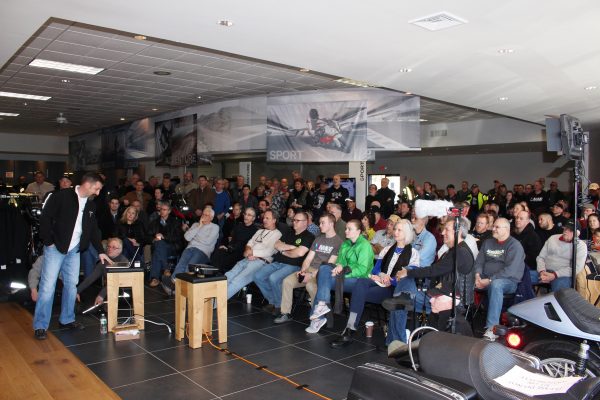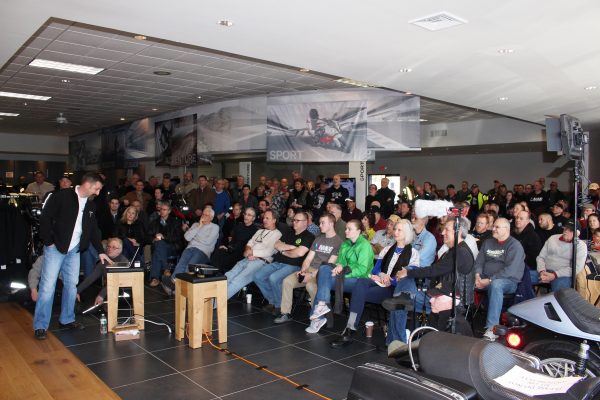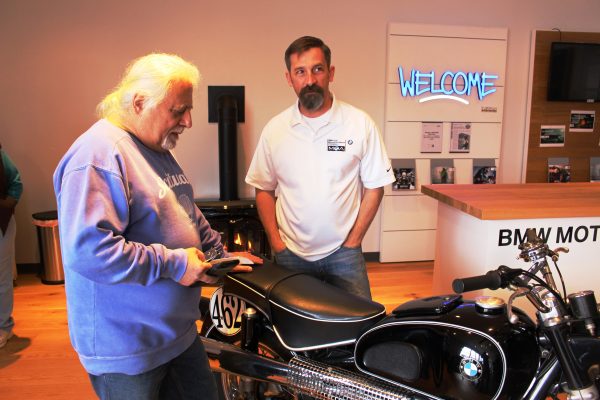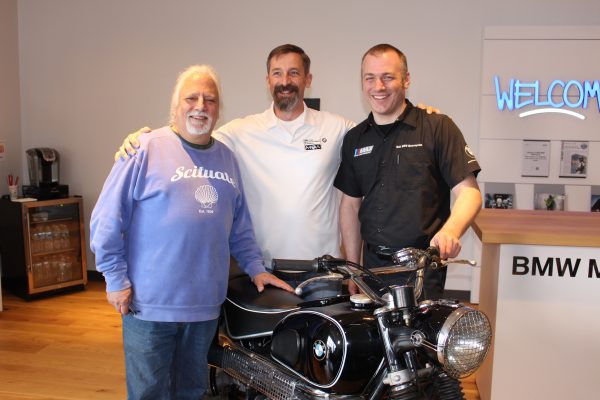Nearly a half-century and a scant few hours separate the cannonball feats of Carl Reese and Fred Boyajian. Their shared accomplishment is setting a record for riding a 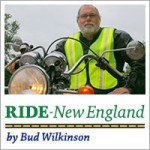 motorcycle from coast to coast in the shortest amount of time. They followed in the tire tracks of the legendary Erwin “Cannonball” Baker, who first did it in 1914. Baker took 11½ days aboard an Indian and only covered four miles on paved roads.
motorcycle from coast to coast in the shortest amount of time. They followed in the tire tracks of the legendary Erwin “Cannonball” Baker, who first did it in 1914. Baker took 11½ days aboard an Indian and only covered four miles on paved roads.
The times and the technology certainly have changed. So have the roads. Reese set the current record last August when he rode a 2015 BMW K 1600 GT touring model from Los Angeles to New York City in 38 hours and 49 minutes. He covered 2,829 miles and his only lengthy stops were for a 75-minute nap in Kansas, to get a rear tire changed by a Harley-Davidson dealer in Ohio, and when he got pulled over by a cop in Pennsylvania.
Why would anyone want to ride virtually non-stop from sea to shining sea?
“I think it was a bucket list item that originated in elementary school,” said Reese recently. “I would leaf through the Guinness Book of World Records and I always thought to myself, ‘What kind of record could I set?’ As I got a little older in life, I thought there are some trips that I would like to take. I had recently lost some close friends and I thought it’s time in my life when I quit being a workaholic and I start taking some time to enjoy some things. A cross country trip was one of my bucket list items.”
Fred Boyajian and Carl Reese
Reese, who lives in Santa Clarita, Calif., chatted about his record-setting jaunt after giving a standing-room-only presentation on the history of cannonballing and on his own ride at Max BMW in South Windsor. During it, he introduced Boyajian, who had come down from his home in Scituate, Mass.
Boyajian set his record in October 1969 riding a less technologically advanced BMW R69US, a 594cc model that was only built in 1968 and 1969. He took 42 hours and six minutes and rode 2,842 miles – doing it on “a barroom bet.”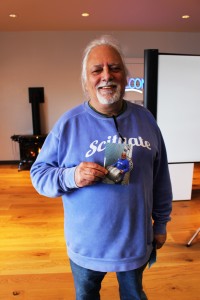
There were no creature comforts for Boyajian. “An R69 is not nimble. It’s a tank,” he said. “Fatigue is your biggest problem. The biggest difficulty I had was when a little five-cent part went out on my headlight, dropping it straight down below.” With the headlight pointed to the ground instead of into the darkness of the road ahead, “I had to slow down. “
Hard as it might be to imagine today, there weren’t freeways wherever you looked back then. “When I did it, the Interstate was not complete. There was no beltway around the cities. The road was different,” he said.
Also hampering him was a beer keg that he adapted as a supplemental fuel tank to enable him to go farther between petrol stops. It was fine when it was full but not when the fuel level declined. “That thing was sloshing around. You try and pass a truck like that, it would buffet you. It was a real danger there,” Boyajian said.
Like Reese, he was stopped once by a cop. “That was 15 minutes in the sun. There was no one to greet me there. Just my father,” he said of his accomplishment, which did net him a guest spot on NBC’s “Today” show. He averaged 69.9 miles per hour and had a top speed of 110.
Reese wouldn’t disclose his fastest speed, citing the statute of limitations and the potential for prosecution even now. He averaged 74 miles per hour. He also had help from a navigation app, radar detector, jamming software, and constant contact with others through his helmet.
“It’s all about the planning. No one just throws a leg over a motorcycle on a whim and tries to go cross country. There’s an infinite amount of planning that goes into a trip like this. I started toying with the idea about two years ago, but I spent a good eight months solid on planning,” he said.
Like Boyajian, he fought fatigue. “Fatigue is your worst enemy on a cross-country trip. The reality is none of us are super-human. We all need sleep,” he said.
Fred Boyajian, Carl Reese and Max Stratton of Max BMW
The most disheartening moment was when his rear tire wore down. “My tire was bald and I was in the middle of nowhere,” he said. He limped along on I-70 at 25 miles per hour until the next exit. “Unbeknownst to me I was very close to a Harley-Davidson dealership, the very next exit away in Bellmont, Ohio. They accommodated me. I’m very humbled by the amount of effort that they put in to getting me back on the road,” he said.
Reese is now working to put together a documentary on the history of motorcycle cannonballing, and there’s an “Iron Riders” page on gofundme. Part of the proceeds will benefit the Motorcycle Relief Project, a non-profit organization in Colorado that offers motorcycle getaways for combat veterans suffering from PTSD and depression. “They give these soldiers a chance to just kind of unplug from daily life,” Reese said.
Six months have passed since Reese’s adventure and he wouldn’t do it again. “It took me two days for my backside to recover,” he said. “Even with cycling shorts underneath my riding pants it was still rough sitting for almost 39 hours.”
(Original published in the “Republican-American” on Feb. 27, 2016.)
 Ride CT & Ride New England Serving New England, NYC and The Hudson Valley!
Ride CT & Ride New England Serving New England, NYC and The Hudson Valley!

